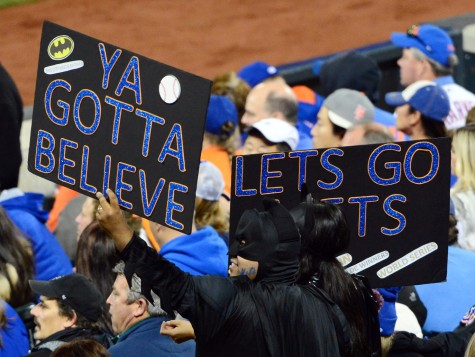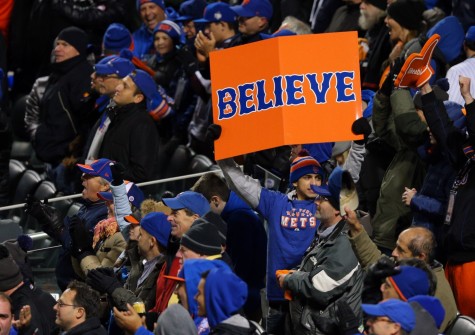
The playoff pool has become a central discussion point in MLB and the MLBPA’s collective bargaining agreement debates.
From the owners’ side of things, expanding the playoff pool to 14 teams is all about money. The more playoff games, the more national revenue the owners rake in. For the players, keeping the playoffs at 12 teams is all about making sure the grind of 162 games and winning your division are respected come playoff time.
I wrote yesterday about all of the different playoff scenarios being proposed by both sides: 12 teams, where the top two teams in each league automatically advanced a round; 14 teams, where the top seed in each league advanced a round, and the next three seeds (two division winners and a Wild Card) get “ghost wins”; and a straight 14-team playoff, where the top seed moves on and the remaining six teams in each league play until there are four teams left on each side.
In both 14-team formats, the division winners who have to play get to pick which Wild Card team they get to face.
It feels like either format can be used by either side as a piece of leverage (the players can agree to 14 teams for more concessions on economic issues, and owners can use not having 14 teams as a way to not concede any more money). But if we do end up with 14 teams, it feels kind of boring, doesn’t it? Even with a ghost win, you’ll likely be getting 95-win teams facing up against seventh seeds who sit around .500. You’ll see probably four or five two-game sweeps in a three-game series.
So I have an idea that might make a 14-team playoff a little more interesting. It will place heavy emphasis on division winners, who all move onto the second round automatically. It will also mix in a bit of a March Madness-style elimination tournament.
While this idea isn’t fully baked through, it’s likely better and more entertaining than a bunch of three-game series featuring some teams that likely didn’t deserve a playoff spot. Think it’s unfair to say they didn’t deserve a playoff spot? Well, they’ll get to earn it.
Let’s take a look.
Who Gets In?
Seven teams from each league will get in: all three division winners, plus the four teams with the best record that didn’t win their division. That’s simple.
For this example, let’s come up with seven teams that will make the playoffs. The divisions the teams won are in parenthesis. (This is not a prediction for 2022, per se, but more so allowing us to put team name out there rather than seed numbers.) Spoiler: the 2022 Mets win their division.

The National League sees the Dodgers, Mets, Cardinals Padres, Braves, Giants and Brewers make it. The American League gets Astros, White Sox, Red Sox, Rays, Yankees, Mariners and Angels in its postseason. In my scenario, ties between potential seeds are resolved first by record against your league, next by run differential and then by road record.
I’d love if there were a caveat that teams need at least a .500 record to get into the playoffs, but that likely won’t happen. If there were only six teams with a record above .500, those six would get in, and you’d play the format as I’m about to present. There’d still be a maximum of seven teams allowed.
Needing a .500 record to qualify may incentivize teams who are hovering around that mark to make moves at the trade deadline rather than stand pat or sell.
Who Plays Who?
Here is where things get fun, in my opinion. Rather than set up division winners to play three-game series against far lesser opponents, the Wild Card teams will play an elimination tournament to get the ultimate Wild Card spot. It resembles the Big East basketball tournament (or any college basketball conference tournament, really).
Here’s how it goes:
- The sixth and seventh seeds in each league play each other the day after the regular season ends, so in the example above, it’d be: Giants vs. Brewers and Mariners vs. Angels. The winner of each moves on. Let’s say the Giants and Angels win it.
- Now each winner plays the fifth seed the next day. Now it’s Angels vs. Yankees and Giants vs. Braves. The Yankees and Giants win in close games, and they move on.
- Now those winners play the fourth seeds the next day for the ultimate Wild Card spot. Yankees vs. Rays, Braves vs. Padres for the final playoff spot. Rays win, Padres win.
Now we have our field.
In the National League, the Dodgers have a home-field advantage over the Padres in the five-game round one, and the Mets will host the Cardinals.
In the American League, the Rays will travel to Houston to start the five-game Division Series, and the White Sox will host the Red Sox.
This produces a guarantee of six playoff games being played at the highest leverage and intensity. That feels like good television, and it also rewards each team for winning its division, or even having a better record than the next. Even if you’re the first Wild Card spot, you can line up your rotation for the Wednesday game and the Division Series starting two days later. It’s harder to do that as the sixth seed when you’ll be fighting for your playoff life for up to three days in a row.
Where Do These Games Get Played?
Here’s the tricky part. As Jack Hendon pointed out to me as I was typing this idea out, that’d be a ton of travel for any six- or seven-seed. Potentially having to travel cross country in a day and then back to the other coast in another day would present a problem. So, as my colleague Aaron Pags suggested in his own playoff format, let’s make these elimination games all in one location.
Ideally, these games would be played in domes or at places where the weather is rarely an issue. That leaves places like Los Angeles, San Diego, Houston or Arlington, Arizona, Tampa and a couple other stadium locations.
Let’s say this year, National League teams will play in Arlington (where the Rangers play), and American League teams will play in Houston. Both locations are decently central to each coast, so the flights in Sunday shouldn’t be bad, and weather won’t play a factor at either spot.
When Do These Games Get Played?
MLB wants full playoff series to start by Thursday or Friday following the conclusion of the regular season. We can do that. We also want any team that plays in the elimination tournament to have a day off before playing the one seed. We can do that, too.
Here’s how the Wild Card elimination round and the first couple games of the Division Series would look with the examples from before:
- Sunday: MLB season ends, seven seeds are set and tie breakers are resolved by various in-season records.
- Monday: Mariners vs. Angels (in Houston), Giants vs. Brewers (in Arlington)
- Tuesday: Angels vs. Yankees (in Houston), Giants vs. Braves (in Arlington)
- Wednesday: Yankees vs. Rays (in Houston), Braves vs. Padres (in Arlington)
- Thursday: Division Series starts with Game 1s with Red Sox vs. White Sox and Cardinals vs. Mets
- Friday: We’re full go. Rays can stay in Houston to start the ALDS, and the Padres travel to Los Angeles for the NLDS. Both Sox teams play again, and the Mets and Cardinals play Game 2
- Saturday: Rays vs. Houston Game 2, Padres vs. Dodgers Game 2 (travel day for the 2/3 seeds)
- Sunday: White Sox vs. Red Sox Game 3, Mets vs. Cardinals Game 3
- Monday: All four series play (if necessary)
- Tuesday: All four series play (if necessary)
- Wednesday: Off day for 1 vs. 4 series (if necessary)
- Thursday: Game 5 of 1 vs. 4 series (if necessary)
There was an off day on the second Wednesday of the postseason in 2021, too.
What’s Wrong With This Format?
The biggest problem with the elimination tournament? The number of games being played. My proposal gives the Wild Card round six guaranteed games every single year. No more, no less.
As I wrote Sunday, a 12-team format has anywhere between six and 10 playoff games extra playoff games across the whole league compared to the old format with just one winner-takes-all Wild Card game. A standard 14-team playoff will feature between 12 and 18 extra games compared to the old format.
Even though many of these games in a 14-team format may be blowouts and won’t garner the interest a single-elimination game would, MLB likely has the data to back up that 12-to-18 iffy-to-bad playoff games would garner more money/ratings than six life-on-the-line playoff games.
On top of that, it’d be extremely hard for a six- or seven-seed to make it far in the tournament, let alone the playoffs given how many games they’d play. Pitching would be at a premium, and we can expand rosters to 28 or so in the tournament to help with that.
However, isn’t that what fans want? A tournament format in the opening round certainly helps tamp down on whatever randomness may come from a lower seed winning a best-of-three series in the Wild Card round in the typical 14-team format. With the tournament, you’re guaranteeing the best teams a chance in the division series while also giving a wider group of teams a chance to ultimately make that division series. The better your record, the easier time you have of it. Sounds fair to me.
















